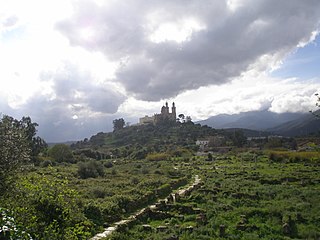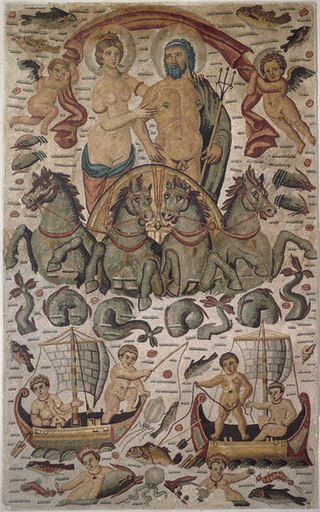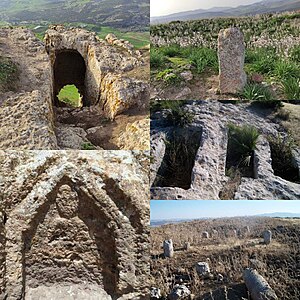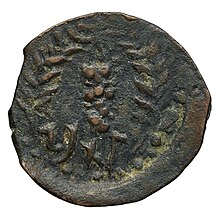
Hippo Regius is the ancient name of the modern city of Annaba, Algeria. It historically served as an important city for the Phoenicians, Berbers, Romans, and Vandals. Hippo was the capital city of the Vandal Kingdom from 435 to 439 AD. until it was shifted to Carthage following the Vandal capture of Carthage (439).

Siga was a Berber and Roman port located near what is now Aïn Témouchent, Algeria. Under the Roman Empire, it was part of western Mauretania Caesariensis, bordering Mauretania Tingitana.

Cirta, also known by various other names in antiquity, was the ancient Berber, Punic and Roman settlement which later became Constantine, Algeria.

Zaraï was a Berber, Carthaginian, and Roman town at the site of present-day Aïn Oulmene, Algeria. Under the Romans, it formed part of the province of Numidia.

Icosium was a Phoenician and Punic settlement in modern-day Algeria. It was part of Numidia and later became an important Roman colony and an early medieval bishopric in the casbah area of modern Algiers.
Aïn El Kebira is a city located 27 km north far from Sétif. As Ancient Satafis it was a bishopric, which remains a Catholic titular see.

Caesarea in Mauretania was a Roman colony in Roman-Berber North Africa. It was the capital of Mauretania Caesariensis and is now called Cherchell, in modern Algeria. In the present time Caesarea is used as a titular see for Catholic and Eastern Orthodox bishops.

Pupput, also spelled "Putput", "Pudput", "Pulpud" and "Pulpite" in Latin, sometimes located in Souk el-Obiod ou Souk el-Abiod, is a Colonia in the Roman province of Africa which has been equated with an archaeological site in modern Tunisia. It is situated on the coast near the town of Hammamet, between the two wadis of Temad to the north and Moussa to the south. Much of the Pupput is buried under modern holiday developments which have been built over the major part of the site.
Sufes was a town in the late Roman province of Byzacena, which became a Christian bishopric that is included in the Catholic Church's list of titular sees.

Cartennae or Cartenna was an ancient Carthaginian and Roman port at present-day Ténès, Algeria. Under the Romans, it was part of the province of Mauretania Caesariensis.

Turrisblanda, was a Roman and Byzantine era colonia (town) in the Roman Empire province of Byzacena in what is today modern Tunisia. Its exact location remains unknown. It was also a capital of an historic diocese of the Roman Empire. The bishopric remains today as a titular see of the Roman Catholic Church. The current bishop is Jan Szkodoń, Auxiliary Bishop of Cracow.
Thenae or Thenai, also written Thaena and Thaenae, was a Carthaginian and Roman town located in or near Thyna, now a suburb of Sfax on the Mediterranean coast of southeastern Tunisia.
Macomades was a Carthaginian and Roman city in North Africa. It was located near present-day Oum-El-Bouaghi, Algeria
Rusubbicari was a Phoenician and Carthaginian colony and Roman town. It has been tentatively identified with ruins at Zemmouri El Bahri, Algeria. The Roman town was in the province of Mauretania Caesariensis.

Numida was an ancient Roman town in the Roman province of Mauretania Caesariensis. It was located in modern northern Algeria.

Tamada was an ancient Roman–Berber civitas in the province of Mauretania Caesariensis. The town lasted through the Byzantine Empire, Vandal Kingdom and Roman Empire into late antiquity, until at least the Muslim conquest of the Maghreb in the 7th century.
The Diocese of Sita was a Christian diocese in Africa Proconsularis. It is presently a titular see of the Roman Catholic Church.
The diocese of Garba is a suppressed and titular see of the Roman Catholic Church.
Sicilibba was an ancient Roman town of the Roman province of proconsular Africa. The ancient town is tentatively identifiable with the ruins at Alaouine in today's Tunisia.

Mididi was a Carthaginian and Roman settlement during antiquity, located at what is now Henchir-Medded, Tunisia. 14 neo-punic inscriptions, known as the Mididi inscriptions, were found in Mididi by René Basset.












